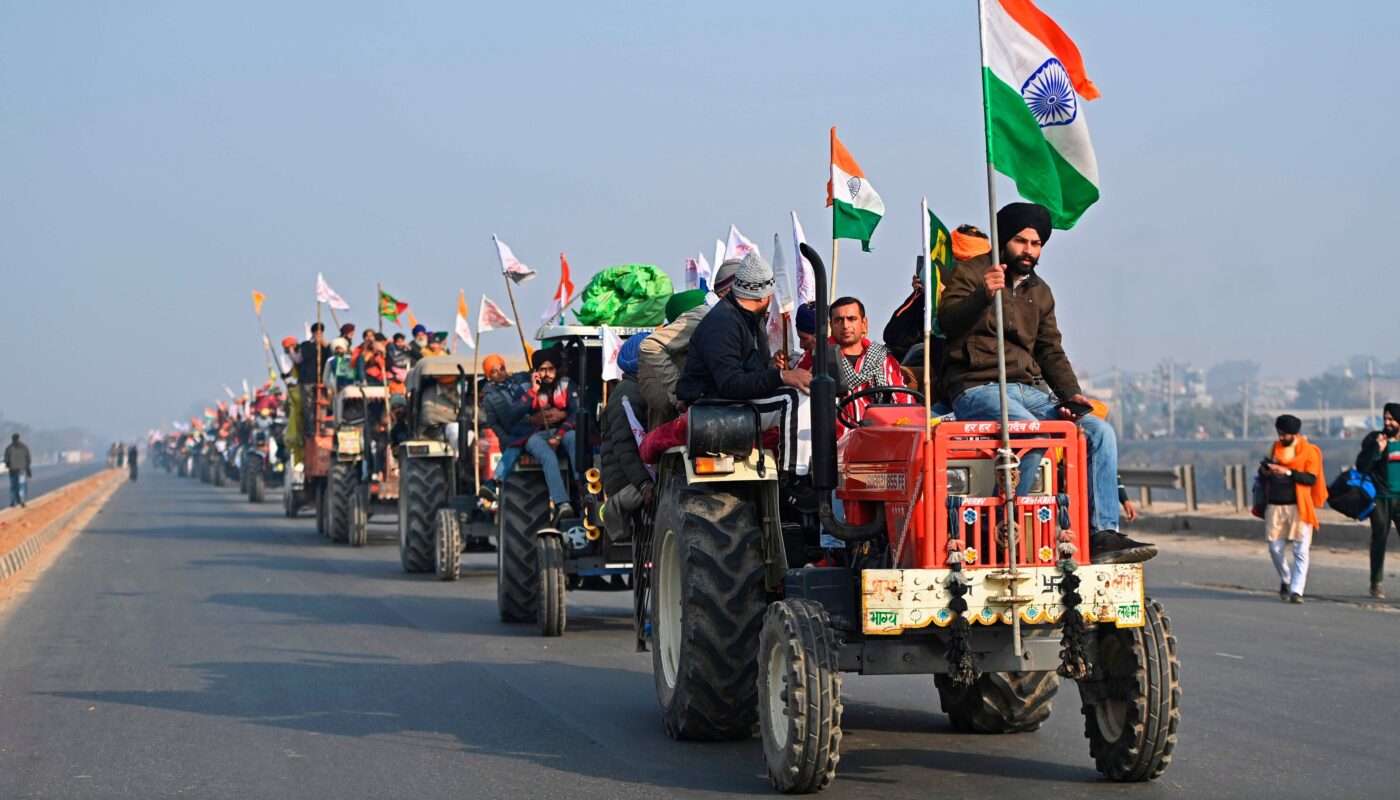In recent times, the ongoing farmer protests in India have sparked widespread debate, with opinions ranging from staunch support to vehement opposition. While some view these protests as a legitimate expression of dissent against agricultural reforms, others accuse them of being fueled by propaganda and political agendas. However, to truly understand the essence of these protests, one must delve deeper into the complexities of the agrarian landscape in India and the grievances of its farmers.
At the heart of the matter lie the contentious agricultural laws passed by the Indian government in 2020. The three laws aimed to liberalize the agricultural sector, introducing reforms such as allowing farmers to sell their produce directly to private buyers and bypassing traditional wholesale markets. Proponents argue that these measures would empower farmers by providing them with greater autonomy and access to better market prices. However, critics, including many farmers and opposition parties, contend that the laws threaten the longstanding system of government-regulated markets, leaving small-scale farmers vulnerable to exploitation by corporate interests.
The farmer protests, which began in late 2020 primarily in the northern states of Punjab and Haryana but later spread across the country, represent a unified stance against these agricultural reforms. Thousands of farmers, primarily from Punjab, Haryana, and Uttar Pradesh, have converged on the borders of the national capital, New Delhi, staging sit-ins and demanding the repeal of the contentious laws. Their protests have garnered international attention and solidarity, with support pouring in from various quarters, including celebrities, activists, and international organizations.
Critics of the protests, however, have raised doubts about their authenticity, alleging that they are being manipulated by opposition parties and vested interests to undermine the government’s credibility. Accusations of propaganda and misinformation have been leveled against both sides, further complicating the narrative surrounding the protests.
To discern whether the farmer protests in India are genuine expressions of grassroots discontent or orchestrated acts of propaganda, one must consider the underlying grievances of the farming community. The plight of Indian farmers, plagued by issues such as indebtedness, lack of access to credit, fluctuating market prices, and inadequate government support, predates the enactment of the controversial agricultural laws. For decades, farmers have grappled with systemic challenges that have pushed many into poverty and desperation.
In this context, the farmer protests can be seen as a culmination of years of frustration and disillusionment with the status quo. While political interests may undoubtedly be at play, dismissing the protests solely as propaganda overlooks the genuine grievances of the farming community and the urgency of addressing their plight.
Furthermore, the resilience and determination exhibited by the protesting farmers, braving harsh weather conditions and facing off against security forces, underscore the depth of their discontent and the sincerity of their demands. Their insistence on dialogue and the peaceful nature of their protests demonstrate a commitment to finding a resolution through democratic means.
Impact of Farmer Protests on the Indian Economy: Unveiling the Economic Ramifications
The ongoing farmer protests in India have indeed had several negative effects on the economy, ranging from disruptions in agricultural supply chains to broader economic ramifications. Here are some key points outlining these negative impacts:
1. Disruption of Agricultural Supply Chains: The protests, which have primarily taken place in key agricultural states such as Punjab and Haryana, have led to disruptions in agricultural supply chains. Roads leading to and from major cities have been blocked by protesters, hindering the transportation of essential goods, including food and agricultural produce. This disruption has not only affected local markets but has also impeded the movement of goods across state borders, leading to shortages and price fluctuations in various parts of the country.
2. Impact on Trade and Export: India is a significant exporter of agricultural products such as rice, wheat, and spices. The disruptions caused by the farmer protests have hampered the transportation and export of these commodities, leading to delays and cancellations of orders. This has not only resulted in financial losses for farmers and exporters but has also damaged India’s reputation as a reliable supplier in the global market.
3. Investor Sentiment and Economic Uncertainty: The prolonged nature of the protests and the government’s handling of the situation have raised concerns among investors about political stability and policy predictability in India. Uncertainty surrounding the outcome of the protests and the government’s response has dampened investor sentiment, leading to volatility in financial markets and a slowdown in investment activity across various sectors of the economy.
4. Impact on GDP Growth: The disruptions caused by the farmer protests, coupled with the broader economic challenges posed by the COVID-19 pandemic, have weighed on India’s GDP growth prospects. The agricultural sector, which accounts for a significant portion of India’s GDP and employs a large segment of the population, has been particularly affected by the protests. A slowdown in agricultural activity and disruptions in supply chains could further exacerbate the economic downturn, leading to lower GDP growth rates in the short to medium term.
5. Rising Government Expenditure: The government’s response to the farmer protests, including measures to address the grievances of protesters and maintain law and order, has necessitated increased government spending. This additional expenditure, coupled with revenue losses resulting from disruptions in economic activity, could strain government finances and widen the fiscal deficit, potentially leading to adverse consequences for macroeconomic stability and long-term growth prospects.
In summary, the farmer protests in India have had several negative effects on the economy, including disruptions in agricultural supply chains, impact on trade and export, uncertainty among investors, slowdown in GDP growth, and increased government expenditure. Addressing the grievances of the farming community and finding a peaceful resolution to the protests is crucial to mitigating these economic challenges and restoring confidence in India’s economy
Conclusion
The farmer protests in India represent a complex interplay of socio-economic dynamics, political maneuvering, and genuine grassroots mobilization. While accusations of propaganda persist on both sides of the debate, it is essential to recognize the underlying grievances of the farming community and engage in constructive dialogue to address their concerns. Only through genuine empathy, dialogue, and meaningful reform can India pave the way for a more equitable and sustainable agricultural future.





whoah this blog is magnificent i love reading your posts. Keep up the good work! You know, a lot of people are hunting around for this information, you can aid them greatly.
Youre so cool! I dont suppose Ive read anything like this before. So nice to seek out anyone with some authentic ideas on this subject. realy thanks for starting this up. this web site is something that is needed on the internet, someone with a little originality. useful job for bringing one thing new to the internet!
I visited a lot of website but I think this one holds something extra in it in it
Hi there, just turned into aware of your weblog thru Google, and found that it is really informative. I am going to be careful for brussels. I’ll appreciate for those who proceed this in future. A lot of other people will be benefited from your writing. Cheers!
I’m impressed, I must say. Really not often do I encounter a blog that’s both educative and entertaining, and let me let you know, you have got hit the nail on the head. Your thought is outstanding; the difficulty is something that not sufficient individuals are speaking intelligently about. I’m very completely happy that I stumbled throughout this in my search for one thing relating to this.
Never knew this, appreciate it for letting me know.